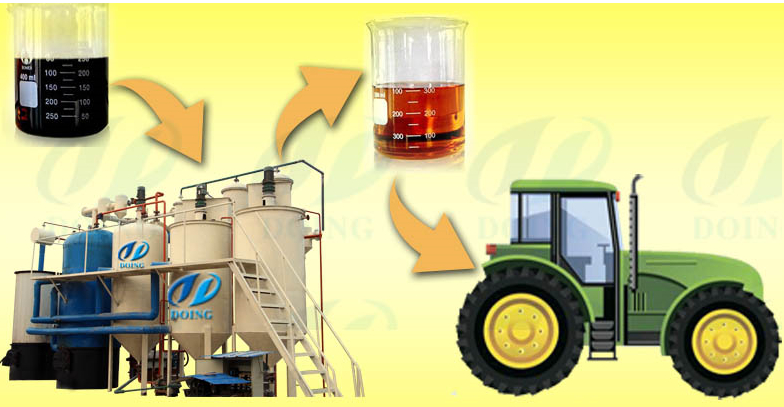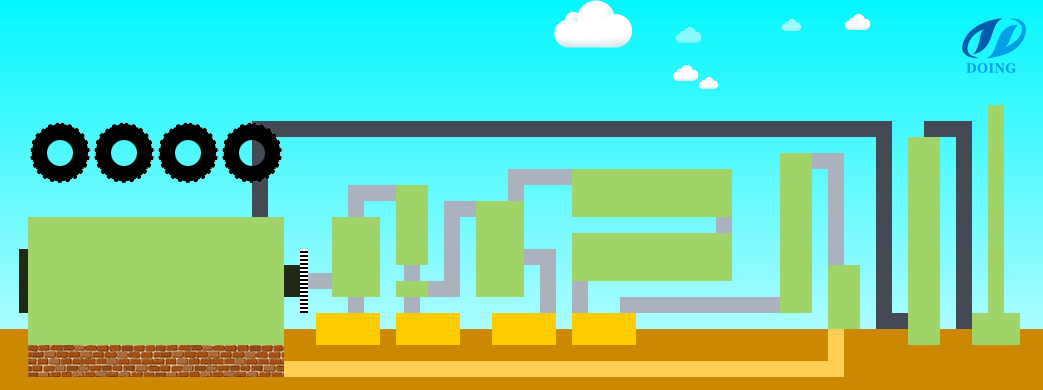Plastic waste is a growing concern and the drivers behind it look set to continue. Although recently there has been a slight decrease in plastic production, this is unlikely to be maintained.Plastic is a highly useful material and its applications are expected to increase as more new products and plastics are developed to meet demands.The increased use and production of plastic in developing and emerging countries is a particular concern, as the sophistication of their waste management infrastructure may not be developing at an appropriate rate to deal with their increasing levels of plastic waste.

Waste plastic water pollution

Say no to waste plastic and turn it into energy
Some other issues with waste plastic are that it affects humans, animals and marine life; it causes soil infertility where dumped; and only 8% of all plastic waste is recycled! Sounds a trifle, right! Another lesser known factual reality is that for the production of plastic, 7% of the global crude oil is consumed, which is more than China's total crude oil consumption.
So what do we do with these ever-growing mounds of plastic waste? Bury plastic underground? Burn it? Or launch it into space! These solutions are more disastrous than the problem itself.
That’s why we developed the plastic to diesel fuel oil pyrolysis plant. This whole process include a pyrolysis process and a distillation process.
The basic pyrolysis process goes as follows:
1. Shredding or compressing for better feeding
Firstly, the waste material must be segregated and, if possible, be cleaned. Then it is shredded to speed up the reaction and to ensure that the reaction is complete.
2. Anaerobic heating
The shredded material must be heated in a controlled manner in an oxygen-free reactor. One of the most crucial factors in this operation is maintaining the right temperature(~430C for plastic) and the rate of heating, as they define the quality and the quantity of the final product.
3. Condensation
The gas that comes out from the reactor must be condensed by passing it through a condensation system, which the recycled water cooling system is the most commonly used method at present.

Plastic to diesel fuel oil pyrolysis plant
The crude oil product that you obtain from the plastic to diesel fuel oil pyrolysis plant can be used as furnace oil but it isn't sufficiently pure for engines. If you want to use it as engine fuel, you need to extract and purify the desired products from the crude oil through a fractional distillation process.
And below are the normal distillation process:
1.Pump the crude pyrolysis oil to the distillation reactor
2.Heating
3.Condensation
4.Chemical processing

Plastic to diesel fuel oil pyrolysis plant
|
Technical parameter of plastic to plastic fuel oil pyrolysis plant |
|
No. |
Items |
Contents |
|
1 |
Equipment type |
DY-1-6 |
DY-1-8 |
DY-1-10 |
|
2 |
Raw material |
Waste plastic |
Waste plastic |
Waste plastic |
|
3 |
Structural form |
Horizontal rotation |
Horizontal rotation |
Horizontal rotation |
|
4 |
24-hour Capacity |
6 ton |
8 ton |
10 ton |
|
5 |
Oil yield |
2.7-3.3ton |
3.6 -4.4ton |
4.5 -5.5ton |
|
6 |
Operating pressure |
Normal |
Normal |
Normal |
|
7 |
Material of pyrolysis Reactor |
Q245R |
Q245R |
Q245R |
|
8 |
Thickness of pyrolysis Reactor |
16mm |
16mm |
16mm |
|
9 |
Rotate speed of pyrolysis Reactor |
0.4turn/minute |
0.4turn/minute |
0.4turn/minute |
|
10 |
Total power |
19KW |
19KW |
19KW |
|
11 |
Mode of cooling |
Water cooling |
Water cooling |
Water cooling |
|
12 |
Cooling area of condenser |
100sqm |
100sqm |
100sqm |
|
13 |
Kind of transmission |
Internal gear drive |
Internal gear drive |
Internal gear drive |
|
14 |
Noise dB(A) |
≤85 |
≤85 |
≤85 |
|
15 |
Size of Reactor(D×L) |
2200×6000 |
2200×6600 |
2600×6600 |
|
16 |
Working form |
Intermittent operation |
Intermittent operation |
Intermittent operation |
|
17 |
Delivery time |
20days |
20days |
20days |
|
18 |
Weight |
27T |
30T |
35T |
|
Prepared by plastic to plastic fuel oil pyrolysis plant |
|
No. |
Item |
Consumption |
|
1 |
Coal(for choice) |
500kg/day |
|
2 |
Wood(for choice) |
800kg/day |
|
3 |
Natural gas(for choice) |
100-150kg/day |
|
4 |
Oil(for choice) |
300-350kg/day |
|
5 |
Electricity |
244kwh/day |
|
6 |
Water(recycled) |
60㎥ /month |
|
7 |
Total power |
19kw |
|
8 |
Land area |
35m*15m
|
|
Technical parameter of plastic oil to diesel fuel distillation plant |
|
Items |
Contents |
|
Model |
DY-5t, DY-10t, DY-20t, DY-50t… |
|
Raw material |
dity motor oil, waste tire crude oil, plastic oil |
|
Structure form |
Vertical (easy cleaning and maintenance) |
|
Heating method |
Indirect heating to prolong the machine service life |
|
Operating pressure |
Constant pressure |
|
Heating material |
Coal, charcoal, fuel gas, fuel oil |
|
Average out-put oil rate |
95% |
|
Material of reactor |
4 reactor with different material |
|
Thickness of reactor |
18mm |
|
Mode of cooling |
Recycled water cooling |
|
Power in total |
20 Kw |
|
Service life |
average 7 years |
|
Land area |
180㎡ |
Some benefits of pyrolysis and distillation are that the processes does not generate harmful pollutants and that the by-products can be used as fuel for running the plant. In the case of plastic, some of the valuable fuels and solvents that can be extracted through waste plastic pyrolysis are gasoline, kerosene, diesel, benzene, toluene and xylene. And a kilo of waste (typically PP) can yield upto a litre of fuel whereas the incineration of the same quantity of plastic would produce 3 kilos of CO2!
So through this process of pyrolysis and distillation, the bane of abhorrent plastic waste, can now become a boon and a source of abundant fuel. This will reduce plastic in landfills, reduce emissions and be a reliable alternative to the depleting fossil fuels. Don't trash your future. Act now!
























